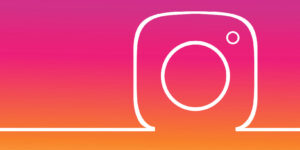
Making a genuine connection with your audience is the gold at the end of the marketing rainbow. Marketing is about more than promoting a product or service. It’s about creating a moment, a story, or an experience that stays with them.
Today, let’s dive into some of the most creative marketing strategies that have not only won customers’ hearts but have also set a new benchmark for how brands engage with their audiences.
Telling Stories That Touch the Heart
One of the most powerful marketing strategy for business is storytelling. A brand that masters this art can transform a simple message into an emotional journey.
Take, for example, the well-known “Share a Coke” campaign by Coca-Cola. By personalizing bottles with people’s names, Coca-Cola didn’t just sell soda, they sold memories, friendships, and moments. It was a masterclass in making a global brand feel personal and touching the hearts of millions around the world.
Leveraging User-Generated Content
In the digital age, the audience wants to be part of the narrative, not just passive consumers. Encouraging user-generated content (UGC) is a brilliant marketing strategy for business to foster this engagement.
GoPro excels in this domain by featuring videos taken by its users with their cameras. This not only showcases the product’s capabilities but also celebrates the adventures of its customers, making the brand synonymous with extreme sports and outdoor exploration. The message is clear: with GoPro, you’re not just buying a camera, you’re becoming part of a community of adventurers.
TV Advertising in the Digital Age
Traditional TV advertising has long been a powerful way to reach large audiences, with an iconic campaign like Apple’s “1984” Super Bowl ad becoming timeless example of creativity and impact. However, as audiences shift to streaming platforms, the landscape of TV advertising has evolved. This is where the use of Over-The-Top (OTT) platform comes into play, offering businesses the ability to reach highly targeted audiences with precision and flexibility.
Content creators and businesses increasingly turn to OTT application creators to develop their own custom apps, enabling them to deliver tailored content directly to their audiences. With these apps, brands can harness the full potential of OTT marketing strategies, combining the reach of traditional TV with the personalization and interactivity of digital platforms. This seamless integration of creativity and technology empowers businesses to connect with customers in more meaningful and impactful ways.
Experiential Marketing
Experiential marketing strategy for business takes engagement to a whole new level, creating lasting memories that bind consumers’ mind to the brand. A standout example is the “Escape the Room” challenge by Ford, designed to promote its Ford Escape SUV.
Participants were locked in a puzzle room and had to use the SUV’s features to solve clues and escape, blending fun with product education. This approach turned a typical car promotion into a thrilling adventure that participants were likely to share with friends and family, multiplying the campaign’s reach.
Innovating with Technology
Augmented reality (AR) and virtual reality (VR) offers untapped creative marketing strategy for business. IKEA’s AR app, IKEA Place, allows users to visualize how furniture would look in their own homes. This not only solves a common customer problem but does so in a way that’s engaging and futuristic. It’s a perfect blend of utility and innovation, showing that IKEA understands and invests in its customers’ needs.
Direct Mail with a Twist
In an era dominated by digital marketing, going analog can catch people off guard in a delightful way. Snap pack mailing services are an unique approach, sending personalized, snap-open mailers that stand out amidst the usual bills and junk mail. This method adds an element of surprise and a personal touch, proving that traditional marketing channels can still be innovative and effective in connecting with customers.
Crafting an Interactive Journey with Gamification
Gamification is transforming the way brands interact with their audience by incorporating game design elements in non-game contexts. A shining example of this is Nike’s Nike+ Run Club app.
By turning fitness into a game where users can track their progress, compete with friends, and earn rewards, Nike sells a lifestyle of health, competition, and community. This strategy not only encourages continuous brand engagement but also creates a supportive community around the brand’s ethos.
Utilizing the Power of Micro-Influencers
While celebrity endorsements have been a staple in marketing for decades, the rise of micro-influencers represents a shift towards authenticity and niche targeting. Micro-influencers, with their smaller but highly engaged followings, can offer brands a more genuine and relatable voice.
Lush Cosmetics has adeptly used this strategy by partnering with micro-influencers who genuinely love their products and embody their values of sustainability and ethical beauty. This marketing strategy for business lends credibility and fosters trust among potential customers who see real people, not just celebrities, loving and recommending Lush products.
Creating Shared Value through Social Causes
Aligning with a social cause can profoundly resonate with customers who share the same values. However, it’s crucial that this partnership is authentic and deeply integrated into the company’s ethos.
TOMS Shoes pioneered the one-for-one model, donating a pair of shoes to a child in need for every pair purchased. This strategy invites customers to be part of a larger mission, creating a powerful emotional connection to the brand. By focusing on shared values and social impact, TOMS has built a loyal customer base that values both the product and the positive change their purchase supports.
The Takeaway
In a world where consumers are bombarded with countless ads every day, creative marketing strategies that forge a real connection are more important than ever. Whether through heartfelt storytelling, engaging user-generated content, immersive experiences, trends of technological innovation, or surprisingly personal direct mail, the goal remains the same: to make your audience feel seen, heard, and valued. By putting creativity and genuine connection at the heart of your marketing efforts, you’re not just promoting a product—you’re building a community and a legacy.






